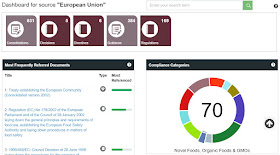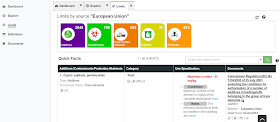In this guest blog, Katy Alexander, Head of Strategic Marketing for Journals at BMJ takes a fascinating look into the future.....
It’s 2037, the fourth industrial revolution has come and gone. The medical research landscape is highly automated and cloud based. Medical researchers are required to combine scientific qualifications with advanced programming and policy/communications expertise, patients are driving the healthcare research agenda and the very nature of disease is disrupted by technology. While some of this may seem implausible, I’ll bet that a number of us would have said the same in late 1990s when the scenarios of the time were pointing towards a potential future when the publishing industry would become a technology industry, prey to small disruptive innovations companies.
As with many industries, the publishing and healthcare industries operate within a complex, rapidly and consistently changing environment. In the past five years alone, the medical research and healthcare space has been influenced by a range of disruptions brought on by digital technologies, political and social unrest, and shifts in customer behaviour. Wearable patient-monitoring devices and apps like Sea Hero Quest have started to offer access to unprecedented data sets, often in real time. This period of rapid change has presented wide-ranging uncertainties.
While scenario planning is far from a new discipline, companies are increasingly incorporating scenarios practice into strategy processes as a means of surfacing and managing these uncertainties more systematically. The process pushes us to think more expansively about potential futures in order to inform today’s strategic choices and the signals and underlying trends we may see in the future that could indicate which scenarios are playing out and how we should adjust to them. Practically scenarios are a structured way for companies to paint divergent versions of the future, they offer possible views of the world in the form of a narrative or “story”.
In November 2016, BMJ embarked on a scenario planning process based on the Saïd Business School’s Oxford Scenarios Programme (OSP). We didn’t set out to predict the future; I think we can all agree that isn’t possible. However, we did want to think more systematically about the future, strengthen our abilities to cope with unpredictable shifts in the landscape and plan for innovation. Led by our Competitive Intelligence team and Director of Strategy, the process took just over eight months. During this time, we identified our two critical uncertainties - (Technology Adoption / Dominant Funding Model) - and defined a set of forces that could influence the direction of medical research. We carried out over 50 interviews with internal and external stakeholders as well as global thought-leaders from a wide-ranging list of industries, hosted three workshops and developed four varied and plausible scenarios describing the range for the future of Medical Research. An overview of our four scenarios is provided below:
Techtopia: The fourth industrial revolution has rid the need for entire medical disciplines and many roles previously carried out by medical researchers are now done by machines. Researchers are required to develop expertise in programming, engineering, and software & informatics. While a small private ecosphere, driven by philanthropic organisations, is paying for research to be undertaken in neglected areas private technology corporations monopolize all elements of medical research. Medicine is highly personalised, health wearables are abundant, patients are triaged in the cloud and medical facilities are small and owned by large corporations.
Sustainable health 2037: Governments have come together to address the big, global issues. A combination of regulation and taxation has encouraged a diverse and highly collaborative research ecosystem. Medical researchers progress in their careers by producing high-quality data sets in areas prioritised by governments. Machine learning provides real-time analysis and interpretation of datasets, and technology is making lifestyles healthier, even in once-remote regions. However, the replacement of human-to-human interaction by technology is exacerbating mental health problems associated with social isolation and loneliness.
Post West power shift: Economic and social instability and volatility in the West have curtailed international movement, and political agendas now focus narrowly on issues of national security and economic health. The West no longer dominates the medical research landscape, Easternisation and the rise of the Global South is causing a geographic shift. Medical researchers are employed by public research and healthcare facilities.
Neighbourhood science: The voice of the people drives the setting of medical research priorities. There is increasing investment in medical research at the boundaries of health and social care, and the data comes from mostly from social networks and community apps that share personal health information. Clinical research is a niche interest collected by crowd-funding and pockets of small investors, and are driven by public appeals.
Aside from informing our strategy process, as a company we have benefited from scenario planning in three main areas:
- Scenario planning has widened the conversation at BMJ. It has stretched teams at all levels and in all departments, bringing us together and enriching conversations, leveraging expertise and knowledge from across the business and challenging everyone’s assumptions.
- Our thought process has collectively moved further away from a linear, preordained and operational path to understanding that linear concepts are not the only way to think about time. We are setting up early warning indicators that can be monitored and contingency plans implemented. This means we can revisit the scenarios and if necessary, revise them.
- Scenario planning draws on a wide range of disciplines and interests, including economics, psychology, politics and demographics, it has engaged us all to think outside of our industry and to remember that even modest environmental changes can have enormous impact
We don’t know exactly what 2037 will look like; it may have some aspects of these scenarios or possibly none. However, we can and should be asking ourselves how key uncertainties and broader trends affect our industry and business. Through this process, we should constantly be looking for ways to innovate and shape the future that we wish to see.
If you want to read more about the scenario planning narratives and the key forces we believe are impacting and shaping medical research please visit our site www.bmj.com/company/scenarioplanning
If you are interested in learning more about our process and the thinking behind our scenarios, keep your eyes open for “The future of global research - a case study on the use of scenario planning in the publishing industry” in a future Issue of the Learned-Publishing.
Katy Alexander is Head of Strategic Marketing for Journals at BMJ and has over 15 years experience in the publishing industry, serving in a variety of marketing and strategy positions. She is always happy to discuss anything related to publishing or disruptive technologies so reach out on twitter @kla2010
Website: www.bmj.com/company
Twitter: @bmj_company
Facebook: https://en-gb.facebook.com/bmjcompany
LinkedIn:https://www.linkedin.com/company/28437/












